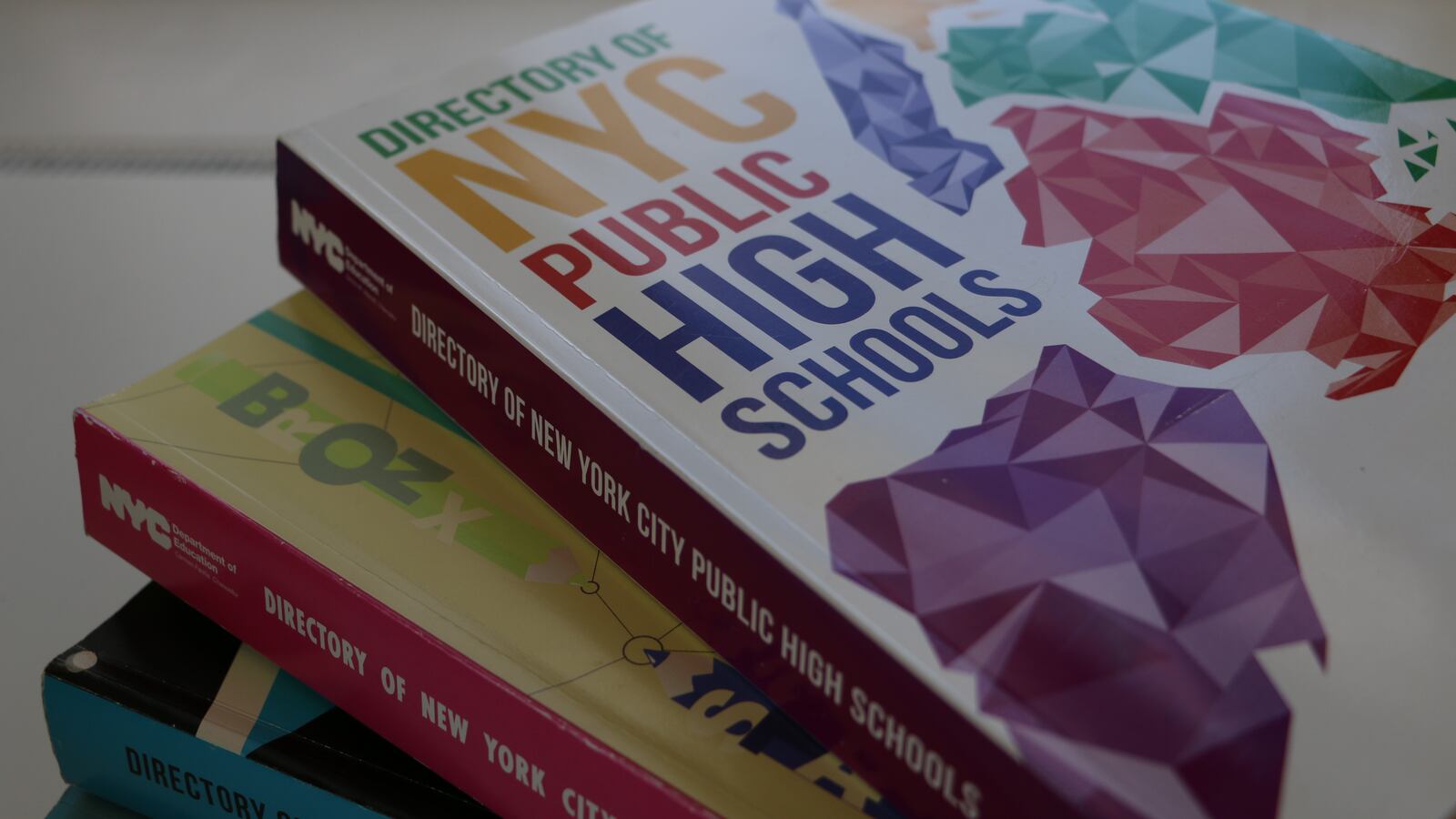Thousands of students and parents will soon use New York City’s hefty high school directory to sift through information about more than 400 schools.
But one expert says the directory, released last week, paints an incomplete picture — one that might cause needless stress or discourage students from applying to the city’s top schools.
Samuel Abrams, who runs a research center at Columbia University’s Teachers College, says the city’s inclusion of each school’s “applicants per seat” makes schools seem more selective than they are. He has been making that point since the New York Times published a story titled, “Couldn’t get into Yale? These New York City high schools are more selective.” He considers the premise of that story — and the stats themselves — misleading.
“The downside is it generates undue stress,” Abrams told Chalkbeat. “It leads to the wrong conclusions about the city’s schools.”
Unlike college admissions, where students can be accepted at multiple schools, New York City’s high school admissions system is a matching process. Students rank up to 12 schools and get matched with only one, unless they also apply to specialized schools. That means a school may look more competitive than it is, he says, simply because a lot of students put it somewhere on their lists.
Readers of the directory are left with the impression that some schools have an extremely low acceptance rate, Abrams argues, even when they accept a wide range of students. Manhattan Village Academy, for instance, has 55 applicants per seat, but accepts students with GPAs in the 70s and state test scores below the state’s passing mark.
Additionally, many schools have specific requirements for students who apply, asking them to interview, for example, audition or submit samples of their work. Yet, students listed as “applicants” in the directory have not necessarily completed those requirements.
One simple solution may be publishing only the number of students who list a school as one of their top three choices, Abrams said.
The city defended its current approach. “As we work to improve the high school admissions process for students and families, we’ll continue to use the single word ‘applicants’ to describe students who apply to a school,” said education department spokesman Will Mantell. “This is the simplest, clearest and most accurate way to share this piece of information, and we added it to the directory in direct response to requests from families and school counselors.”
This is not the first time information in the directory has been accused of being incomplete or misleading, but city officials are working to rectify some of those problems and provide more information to families. Last year, they launched “School Finder,” an interactive tool for students to search information about each school.
Still, Abrams says this wording remains a major hurdle that may discourage students from applying to top schools. Low-income students of color are often not represented at the city’s top schools, and evidence suggests one reason is that they never apply. An analysis from the city’s Independent Budget Office last year found that even strong students from weak middle schools tend not to apply to top high schools.
Information that exaggerates the idea that schools are out of reach will only compound the problem, Abrams said.
“It stands to discourage guidance counselors,” Abrams said, “especially guidance counselors in disadvantaged neighborhoods.”

